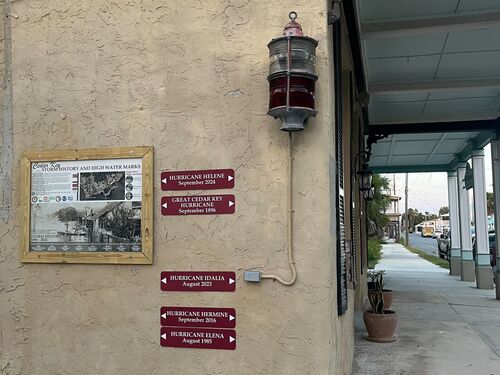The Gulf Research Program Announces Support for Regionally Focused Architectural Studio Design Courses at Five Universities
Program News
By Pete Nelson
Last update September 14, 2022
WASHINGTON — The National Academies of Sciences, Engineering, and Medicine’s Gulf Research Program (GRP) today announced funding awards to five universities for the creation of interdisciplinary architectural studio design courses that engage with the unique features of the Gulf of Mexico region. The courses will offer undergraduate and graduate students the opportunity to apply creative design approaches to address major regional issues in three GRP mission areas: offshore energy safety, environmental protection and stewardship, and Gulf health and resilience.
The five schools piloting design studio courses over two semesters in the fall and spring of the 2022/2023 school year are Auburn University, Louisiana State University, Mississippi State University, University of Florida, and Tulane University. Through this undergraduate and graduate curricula development, the GRP aims to engage the future workforce of the Gulf. The lessons and successes of the pilot year will be used to develop expanded versions of the courses.
“The Gulf is a dynamic place, and it is hard to know what physical, social, and cultural realities can look like in the future,” said GRP Executive Director Lauren Alexander Augustine. “We’re pleased to welcome the design community into the GRP family to help us see connections among people, effects of policy, and our physical environment and to help us imagine and visualize integrated approaches that support a resilient and sustainable future.”
The GRP is awarding a total of $892,000 for implementation of the pilot courses. They will be oriented toward the challenges facing the institutions’ respective regions:
- Auburn University’s Gulf Landscape Infrastructure Pilot Studio will apply an interdisciplinary, community-engaged approach to strengthening coasts and coastal infrastructure through a partnership between three colleges on campus and stakeholders in a Gulf Coast community. The faculty team will use collaborative approaches that incorporate landscape architecture, science, and engineering to meet the pressing needs of coastal communities through design.
- Mississippi State University’s The Gulf Coast Studio: The New Blue Economy Coastline will engage community, university, and business partners with multidisciplinary studios combining two colleges of landscape architecture and architecture faculty and students to explore planning, landscape, and infrastructure issues of the current and future Gulf Coast. The studio work will connect with the University of Southern Mississippi’s Gulf Blue Initiative to enable the community to imagine a transformed coastline and resilient buildings shaped by emerging marine research and blue industry.
- University of Florida’s GulfSouth studio will approach Florida’s challenges through intensive design thinking, community engagement, and computational integration. The project will explore the development of a “digital twin for design” to synthesize diverse research outputs and teaching methods from across a range of disciplines. Projects could include assessments of socio-ecological systems; scenario planning for adaptation; zero carbon buildings focused on multi-hazard events; or approaches to reducing climate change impacts on health outcomes in underrepresented Gulf coast communities.
- Tulane University’s Gulf Research Studio — A Louisiana-Based Interdisciplinary Research Design Studio Exploring Gulf Coast Futures will investigate the historic and current conditions of Gulf Coast oil legacy infrastructures, affected communities and their health, environmental challenges, and opportunities for protection. The studio will next embark on a diagnosis and formulation of major research questions toward design interventions.
- Louisiana State University’s Grand Reduction Studio — Exploring Barrier Island Design will draw heavily from ongoing coastal research, engaging researchers from across the campus around issues of coastal resilience and nature-based risk reduction strategies. A fall studio and three related spring courses will focus specifically on barrier island conditions — from land loss and storm impacts to extreme population and tourism expansion. Projects will draw students and faculty from architecture, landscape architecture, civil/coastal engineering, and coastal ecology to collaborate on design strategies.
The National Academies’ Gulf Research Program is an independent, science-based program founded in 2013 as part of legal settlements with the companies involved in the 2010 Deepwater Horizon disaster. It seeks to enhance offshore energy system safety and protect human health and the environment by catalyzing advances in science, practice, and capacity to generate long-term benefits for the Gulf of Mexico region and the nation. The program has $500 million for use over 30 years to fund grants, fellowships, and other activities in the areas of research and development, education and training, and monitoring and synthesis.
The National Academies of Sciences, Engineering, and Medicine are private, nonprofit institutions that provide independent, objective analysis and advice to the nation to solve complex problems and inform public policy decisions related to science, technology, and medicine. They operate under an 1863 congressional charter to the National Academy of Sciences, signed by President Lincoln.
Contact:
Pete Nelson, Director of Communications
Gulf Research Program
PNelson@nas.edu



